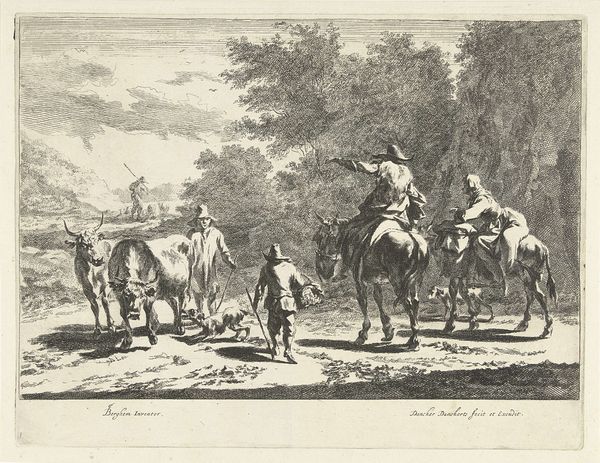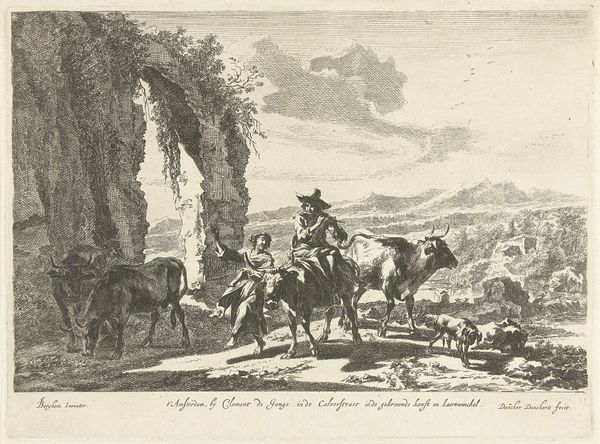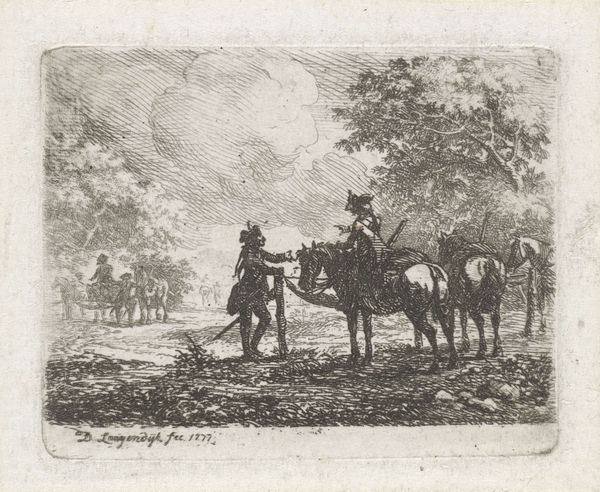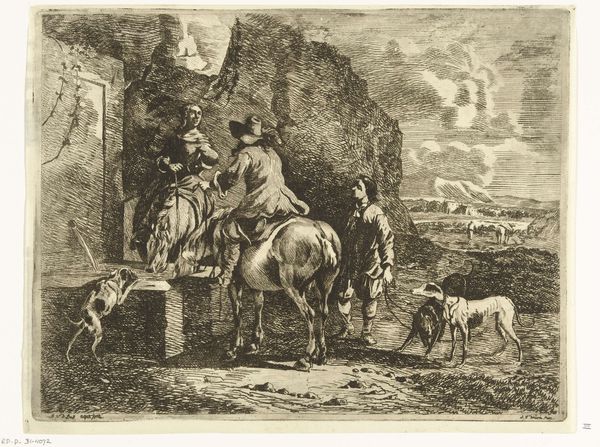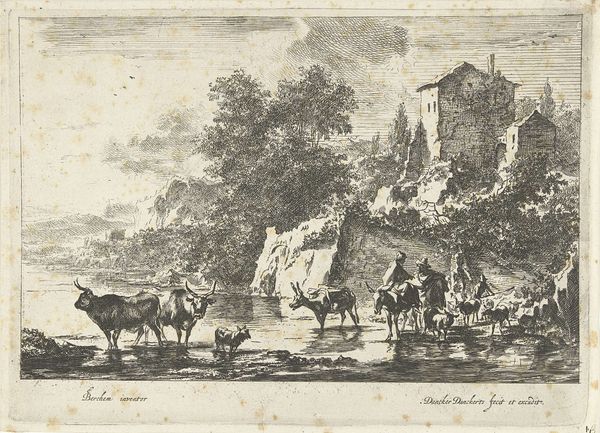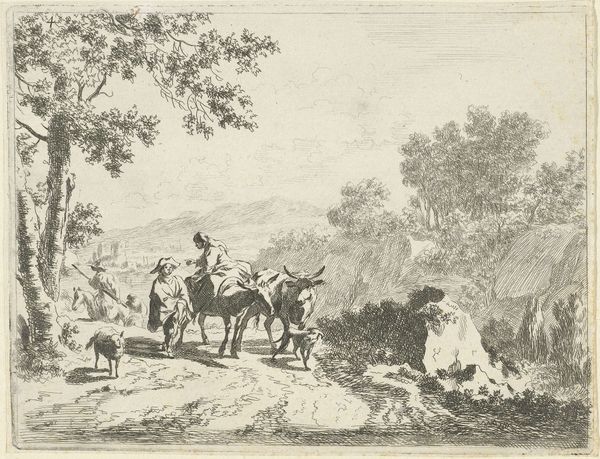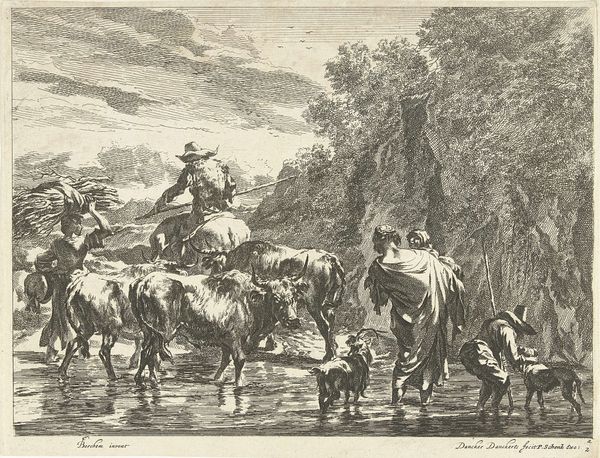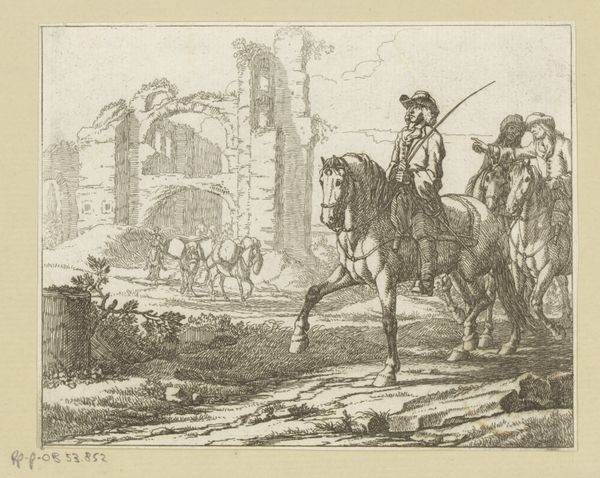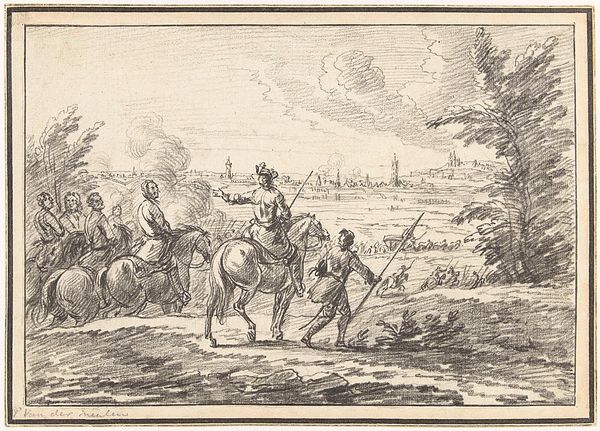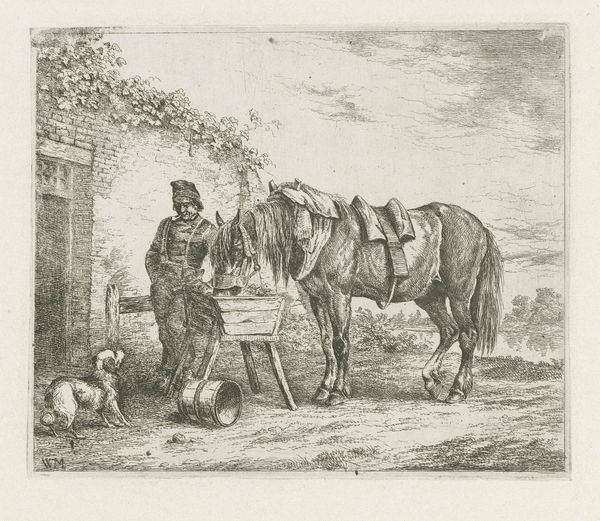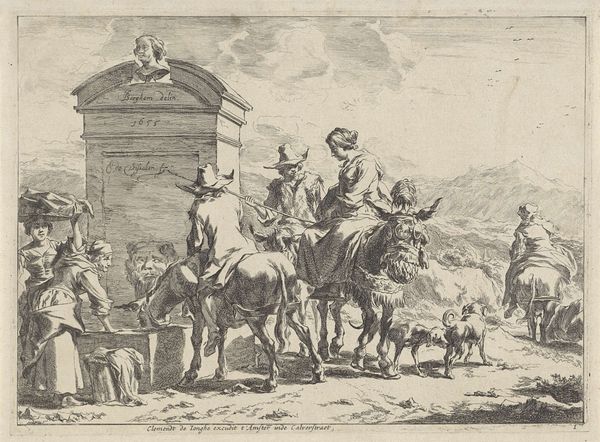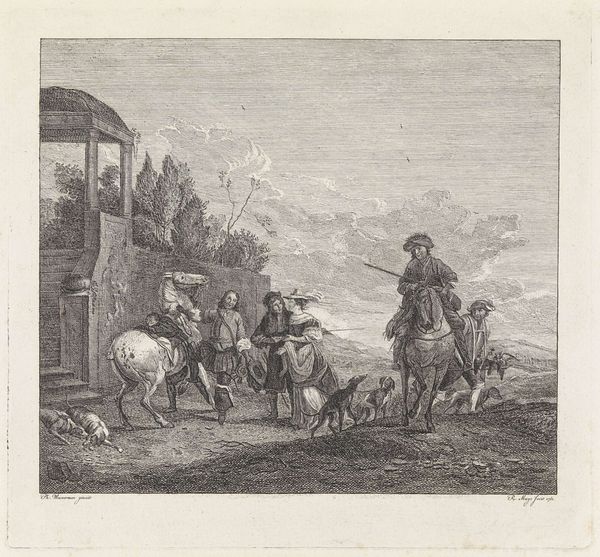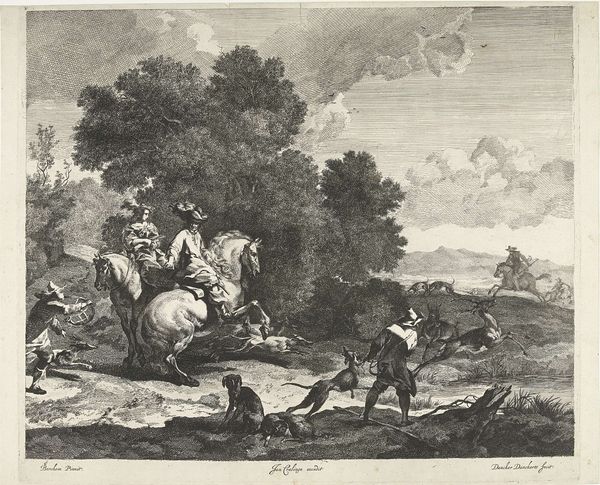
Herders met muilezels en vee bij bron in berglandschap 1643 - 1666
0:00
0:00
danckerdanckerts
Rijksmuseum
print, engraving
#
baroque
# print
#
landscape
#
figuration
#
line
#
genre-painting
#
engraving
Dimensions: height 213 mm, width 293 mm
Copyright: Rijks Museum: Open Domain
Editor: So, this is "Herders met muilezels en vee bij bron in berglandschap," which translates to "Herdsmen with mules and cattle by a spring in a mountain landscape" by Dancker Danckerts, dating roughly from 1643 to 1666. It's a print, an engraving, and it strikes me as a pretty idealized, romantic view of pastoral life. What do you see in this piece, especially given the period it was created? Curator: It's true, this work certainly participates in the construction of the "pastoral ideal" – a romanticized view of rural life that was especially popular among the European elite during the Baroque period. But I’m also struck by how it subtly hints at the social structures at play. Look at the central figure on horseback, appearing to direct the movements. Does this resonate with contemporary conversations about class and labor in similar imagery? Editor: Yes, definitely! It is like the contrast between those riding animals, and the ground-level labourers… I hadn't really considered that angle, though I see it clearly now. Curator: Precisely. Think about who these images were *for*. The art served as a comforting fantasy for those in power, who may never have had to experience that lifestyle depicted directly. How does the depiction of gender play into this as well? Notice the active role assigned to some figures and the more passive observation from others. Editor: Now that you mention gender, the central figure *could* be female…leading the procession and giving directions. It's interesting that this leadership isn't explicitly male. Curator: Exactly! And by noting those details, we might complicate or deepen our understanding of 17th century society as a whole. What do you think of the ruin on the left side of the scene? Editor: It lends a feeling of faded glory and… nostalgia. Like everything is evolving through time and memory. Curator: Precisely! The ruins function to provide the viewer with a sense of temporal depth – it serves to subtly indicate an understanding of both progress and loss. Now that you see all these perspectives, do you find it changes your impression of the image? Editor: Absolutely. It went from seeming like a pretty, simple landscape to something that speaks to a whole matrix of societal norms, power dynamics, and romanticized views of country life.
Comments
No comments
Be the first to comment and join the conversation on the ultimate creative platform.
